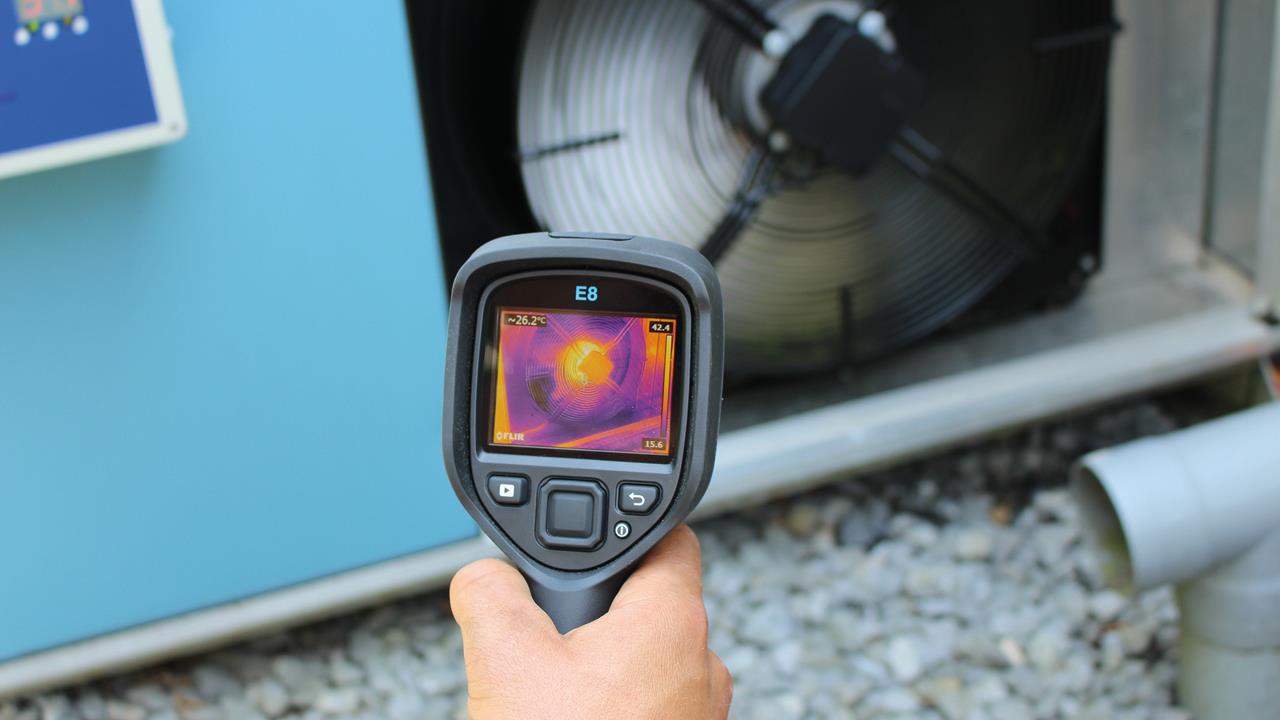

Andrew Baker, Sales Director, North Europe, at FLIR Systems, explains how thermal imaging cameras can improve your ability to detect faults in HVAC equipment.
Professionals who install, inspect, and maintain heating, ventilation, air conditioning, and refrigeration systems face a variety of challenges. In a single day, they might be part electrician and work with electrical issues, part plumber and work with water or combustible gas in pipework, or do both jobs and install an entire system. A thermal imaging camera can help determine the root cause of a problem quickly, identify the faulty component and provide a level of trust that recommended repairs are indeed required.
Residential HVAC engineers are usually called to sites with a very general complaint that ‘the system isn’t working’, only to find issues extending from basic component failures to problems with the condensing unit, evaporator coils, and the air handling system.
Commercial and industrial HVAC engineers usually work on regularly scheduled maintenance of these systems to maintain operational efficiency, though off-schedule visits are also needed to diagnose and repair a specific problem that may arise and limit plant operations. Customers want to avoid downtime and budget maintenance and repair expenses. They want to know well in advance if something is going to fail, since the cost of downtime can be very high. In addition, the cost of the repair may require approvals to proceed.
The traditional method used to diagnose temperature related issues is a spot temperature gun, which is inexpensive and easy to use. Unfortunately, the device’s accuracy is entirely dependent on the user aiming it correctly. Also, they don’t visually show the user where components are hot; instead the user has to guess where the problem may lie.
As a result, the industry has started to use thermal imaging cameras to find problem areas in all aspects of their work. They operate by detecting heat (or lack of heat) given off by an object. The sensor takes the energy and translates it into light. The viewer sees the light in a range of colours – red, orange, and yellow indicate heat, while dark blue, black, or purple signify colder temperatures.
Thermal imaging is valuable for the pure speed of which it can diagnose basic HVAC problems such as broken fuses, breakers, connections, belts, bearings, and hoses. It also helps see differential temperatures and find problems with the building construction that might have an impact on system performance.
A thermal camera is also suitable for determining if evaporating units are working up to par. For example, if the evaporator coil tubes are clogged, the camera can detect if the flow is uniform, or whether only half the coil is working properly. The technology can also diagnose issues with air conditioner units; a quick scan of every vent can see if any are too warm or too cold.
Thermal imaging also makes it easier to conduct electrical troubleshooting by guiding the engineer to electrical components that may not be operating properly. All operating circuits show some sort of heat during operations, but when one circuit reads hotter or colder than the surrounding comparable items, it may be worth investigating.
Documentation is another essential feature of thermal imaging. Showing images to customers can help support engineers’ recommendations. Additionally, images may be collected over time and used to look at the long-term health of a component, or establish the operational norms of properly operating equipment.
Air leaks are clearly visible with thermal imaging. The cause may be old ductwork, leaky ductwork, improper insulation or connections between components, or faulty operation of components. These items are generally invisible without thermal imaging. An engineer who shows the customer the problem visually, fixes the issue, and follows up with a before/after image will be much more credible.
Some HVAC engineers even insert a before and after picture on their invoice to provide assurance that the issue was corrected as diagnosed. Happy customers, who are confident in the work process, are customers who lead to referrals and repeat business.
If you'd like to keep up-to-date with the latest developments in the heating and plumbing industry, why not subscribe to our weekly newsletters? Just click the button below and you can ensure all the latest industry news and new product information lands in your inbox every week.